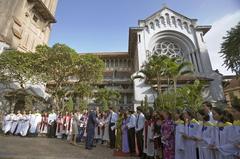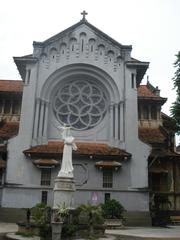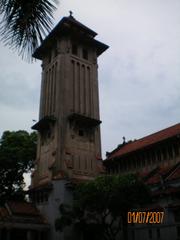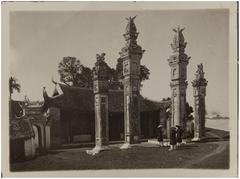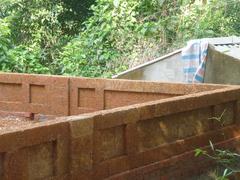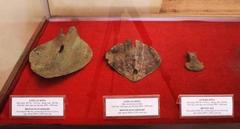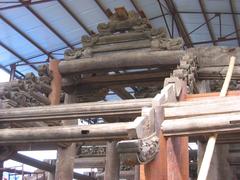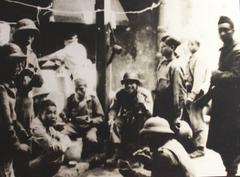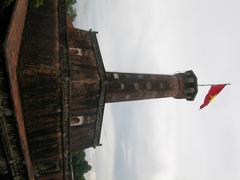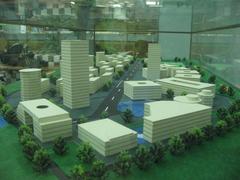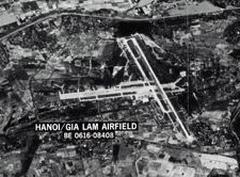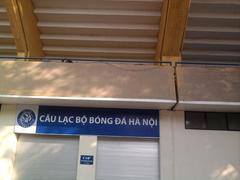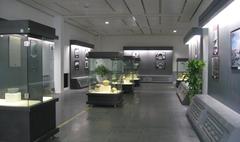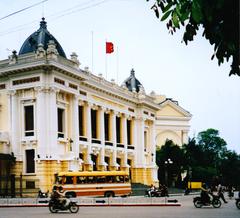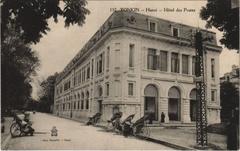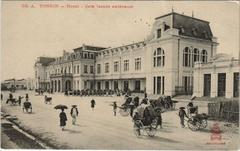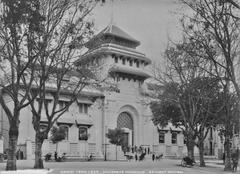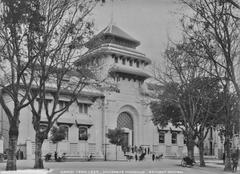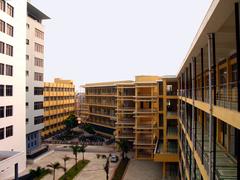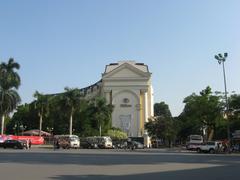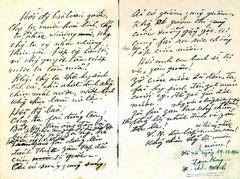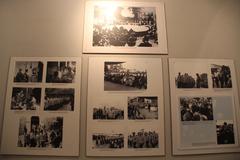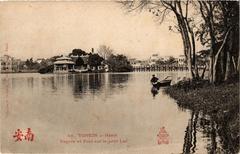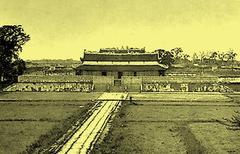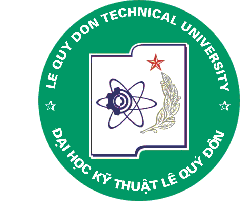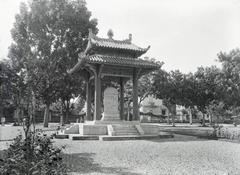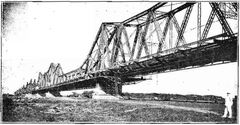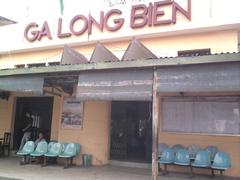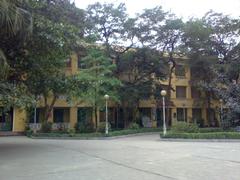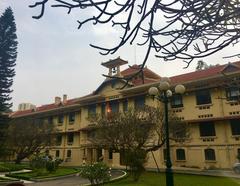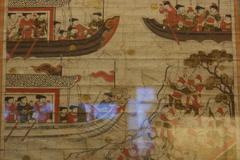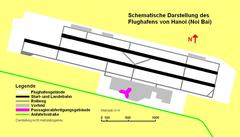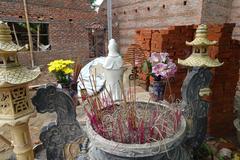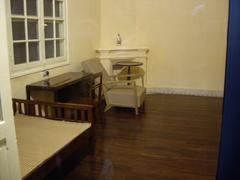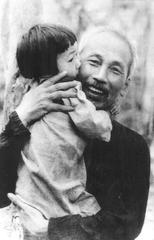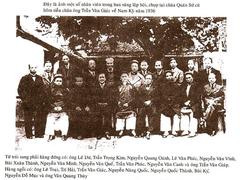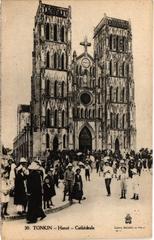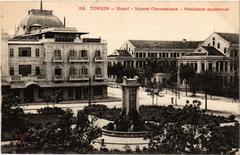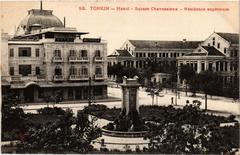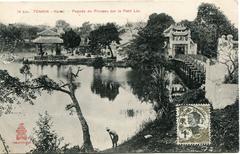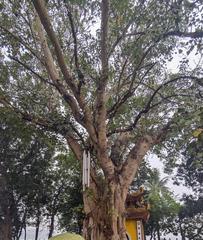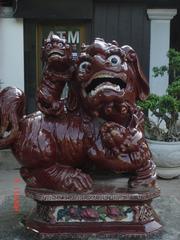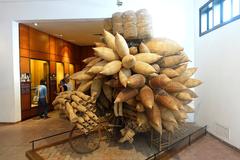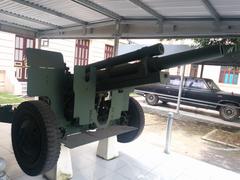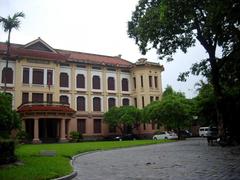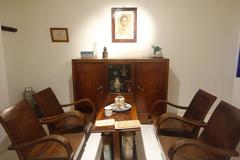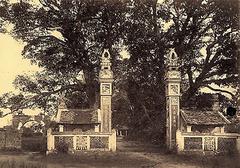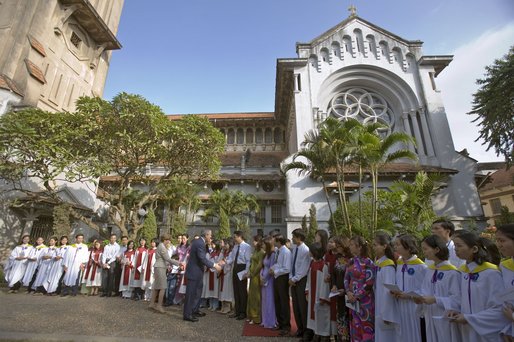
Cua Bac Church Hanoi Vietnam: Visiting Hours, Tickets, and Historical Site Guide
Date: 14/06/2025
Introduction: Cua Bac Church’s History and Cultural Significance
Nestled in the Ba Dinh District, Cua Bac Church is a prominent symbol of Hanoi’s rich cultural heritage, religious diversity, and architectural innovation. Officially named the Church of Our Lady of the Martyrs, this Catholic landmark stands out for its harmonious blend of European Art Deco and traditional Vietnamese design elements. Designed by French architect Ernest Hébrard between 1925 and 1932, Cua Bac Church was part of the French colonial urban modernization plan. Its strategic location opposite the Northern Gate (Cửa Bắc) of the ancient Thang Long Citadel underscores the connection between Hanoi’s imperial past and its modern development.
Today, Cua Bac Church functions as an active religious and community hub, hosting regular Masses, cultural events, and ecumenical gatherings. The church is renowned for its asymmetrical bell tower, multi-layered pagoda-inspired roofs, and yellow façade, all set within serene gardens that offer a peaceful respite from the city’s bustle. Its accessibility features and free admission make Cua Bac Church an inclusive landmark for all visitors. Proximity to other significant sites such as the Ho Chi Minh Mausoleum and One Pillar Pagoda further enhances its appeal (Wikipedia; Hanoi Times).
This guide provides essential visitor information, including opening hours, ticket policies, architectural highlights, accessibility, and nearby attractions—making it a must-read for those interested in Hanoi’s historical sites and religious architecture.
The Origins and Development of Cua Bac Church
Early 20th-Century Urban Planning and French Colonial Influence
Cua Bac Church originated from Hanoi’s early 20th-century urban redesign by French architect Ernest Hébrard. His vision integrated European urban planning with local Vietnamese aesthetics, emphasizing green spaces and environmental harmony—an innovative approach for the era (Wikipedia). The church’s location, directly in front of the Northern Gate of Thang Long Citadel, was chosen to symbolize the interplay between ancient tradition and colonial modernity (travelshelper.com).
Construction and Architectural Innovation (1925–1932)
Construction began in 1925 and concluded in 1932. Hébrard’s design for Cua Bac Church showcases architectural eclecticism, featuring a rectangular layout with asymmetrical elements, a unique bell tower, and a combination of Art Deco motifs with Vietnamese curved tiled roofs and multi-layered rooflines. The result is a striking structure that fuses European and local influences (vnitourist.com; guidetohanoi.com). The multi-layered roof system echoes Vietnamese pagodas, symbolizing East-West cultural exchange (travelshelper.com).
Naming and Ecclesiastical Evolution
Originally dedicated to the Queen of Martyrs due to canonization requirements, the church was later retitled as the Church of Our Lady of Hanoi in 1959, with its feast day marked on July 2 (Wikipedia). Its popular name, Cua Bac, derives from its proximity to the Citadel’s Northern Gate, reinforcing its historical resonance (vnitourist.com).
Colonial and Post-Colonial Roles
During the colonial period, Cua Bac Church served both the French administration and the local Catholic community, becoming a symbol of cross-cultural and religious exchange. After the colonial era, it remained a vibrant parish and an enduring testament to Catholicism’s role in Vietnam (guidetohanoi.com; travelshelper.com).
Essential Visitor Information
Visiting Hours and Admission
- Opening Hours: Typically open daily from 7:00 AM to 6:00 PM. Hours may extend to 7:00 PM during special events or religious holidays; check locally for updates.
- Admission: Free for all visitors; donations are welcomed.
Accessibility
- Ramps and level entrances are available, ensuring access for visitors with mobility challenges. Note that some entrances may involve steps; assistance may be required.
Guided Tours
While the church itself does not offer official guided tours, many local operators include Cua Bac Church in their city tours, providing historical and architectural context.
Location
- Address: 56 Phan Dinh Phung Street, Ba Dinh District, Hanoi, Vietnam.
- Transport: Easily accessible via taxi, motorbike, public bus, or a short walk from the city center. Parking is available nearby but may be limited during busy periods.
Architectural Highlights
Cua Bac Church exemplifies the Indochine architectural style, blending European and Vietnamese elements (Vietnam Tourism). Notable features include:
- Asymmetrical Bell Tower: Unique for Vietnamese churches, emphasizing verticality and breaking away from traditional bilateral symmetry.
- Tiled Roofs: Multi-layered, curved tiles reminiscent of pagodas and communal houses.
- Yellow Façade: Evokes colonial-era Vietnamese architecture.
- Stained Glass Windows: Depict biblical scenes and Vietnamese saints.
- Spacious Interiors: High ceiling, central dome providing natural light, and local woodwork on the altar.
- Gardens: Mature trees and landscaped grounds offer a tranquil city retreat.
Religious and Cultural Significance
Cua Bac Church remains one of Hanoi’s three major Catholic churches—alongside Saint Joseph’s Cathedral and Ham Long Church (Wikipedia). It serves an active parish, hosts significant events such as Christmas and Easter, and is a center for ecumenical outreach. The 2006 interfaith service attended by U.S. President George W. Bush highlighted its international importance (BBC News).
The church also offers catechism classes, youth programs, and cultural workshops, fostering religious and intercultural dialogue (Vietnam Online).
Nearby Attractions
Cua Bac Church’s central location allows easy visits to:
- Ho Chi Minh Mausoleum: Vietnam’s national memorial.
- One Pillar Pagoda: Iconic Buddhist temple.
- Hoa Lo Prison Museum: Former colonial prison.
- Quan Thanh Temple and Tran Quoc Pagoda: Notable religious sites.
These destinations create a comprehensive itinerary of Hanoi’s historical and cultural landscape.
Practical Tips for Visitors
- Dress Modestly: Cover shoulders and knees; hats should be removed inside.
- Best Times to Visit: Early mornings or late afternoons for tranquility; major feast days for vibrant celebrations.
- Photography: Allowed, but avoid using flash and be respectful during services.
- Facilities: Restrooms are available but basic. Bring bottled water, especially in warm weather.
- Safety: The area is safe and well-patrolled; remain mindful of personal belongings during busy periods.
Frequently Asked Questions (FAQs)
Q: What are Cua Bac Church’s opening hours?
A: Generally, 7:00 AM to 6:00 PM daily, with possible extensions for special events.
Q: Is there an entrance fee?
A: No, admission is free.
Q: Are guided tours available?
A: Local tour operators often include the church; check with providers for details.
Q: Is the church accessible for people with disabilities?
A: The church is mostly accessible, but some entrances have steps; assistance may be needed.
Q: What attractions are nearby?
A: Ho Chi Minh Mausoleum, One Pillar Pagoda, Hoa Lo Prison Museum, Quan Thanh Temple, and more.
Conclusion
Cua Bac Church stands as a vibrant testament to Hanoi’s architectural ingenuity, religious heritage, and cultural integration. Its legacy as a bridge between East and West is evident in both its design and its community role. Free admission, a central location, and ongoing religious and cultural activities make Cua Bac Church a highlight for both tourists and locals. Use this guide and the resources below to plan a rewarding visit to this historic Hanoi landmark.
Further Resources
- Wikipedia – Cua Bac Church
- Hanoi Times – Cua Bac Church
- Vietnam Tourism – Cua Bac Church
- Vietnam Catholic Tour – Cua Bac Church
- BBC News – Interfaith Service
- Vietnam Online – Cua Bac Church
- Vietnam Guide – Cua Bac Church
For more travel tips, downloadable guides, and the latest updates on Cua Bac Church and Hanoi’s historical sites, visit the Audiala app and follow our social media channels.
